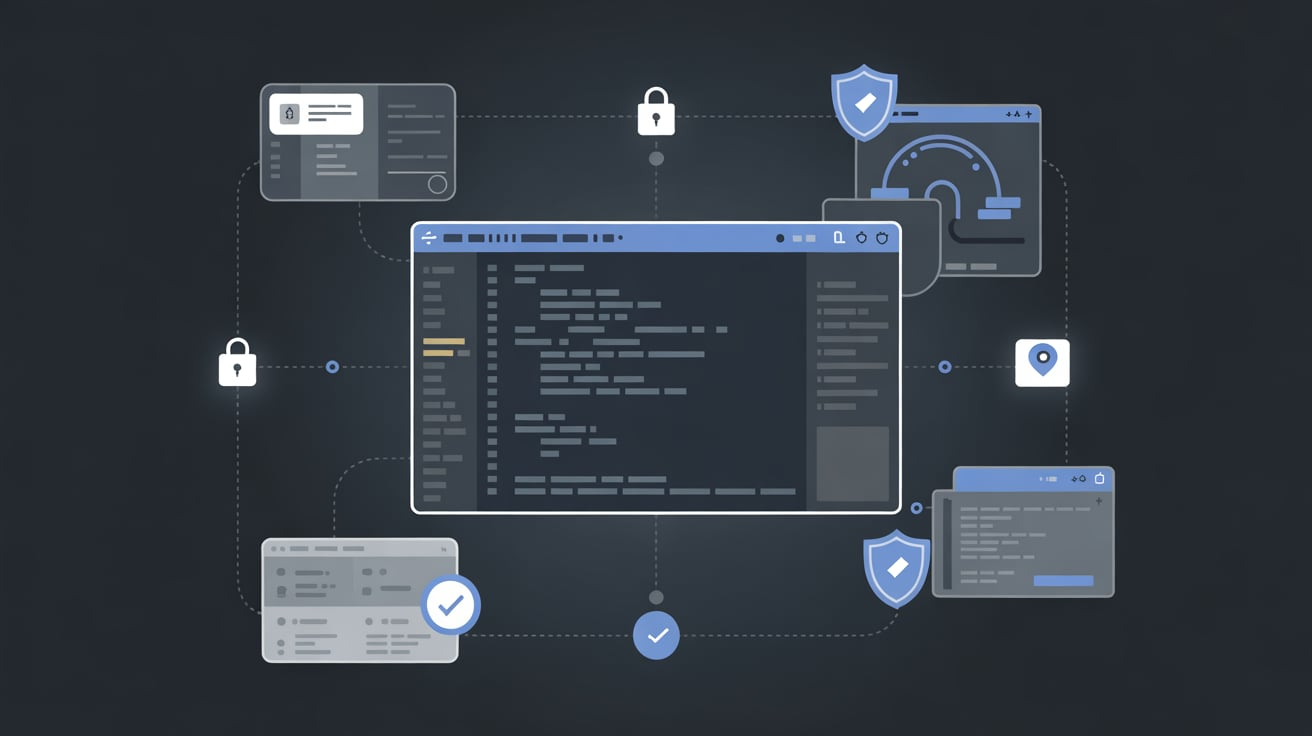(This is the second piece in a three-part series on the Altadena Fires. The first part can be read here.)
Seventy-two hours after the fire began, firefighters continue to monitor smoldering ashes from the Eaton Canyon Fire in Altadena, California, on January 10, 2025.
The Palisades Fire began on January 7, around mid-morning. Though a definitive cause remains elusive to investigators, leading theories point to either the reignition of an earlier fire in the area that had been contained or some kind of human activity that sparked the blaze at its point of origin near a well-traveled trail. The Eaton Fire ignited hours after the Palisades Fire during the evening of January 7. Still-ongoing investigations have narrowed the immediate source of the fire to faulty or erroneously active electrical transmission equipment owned and operated by SoCal Edison.
On January 7, 2025, daytime temperatures in the Pacific Palisades hit 70°F, surpassing historical averages for the neighborhood. It was yet another day of clear skies, continuing the driest 9 month period ever observed for southern California. These hot and dry conditions turned southern California into an oven, baking vegetation that had grown rank during the heavy precipitation of the 2022, 2023 and 2024 rainy seasons into a perfect bouquet of dry tinder. When the Santa Ana winds began its annual crossing of the Transverse Ranges into the Los Angeles Basin on January 7, the region was all but begging for incineration.
As the fires raged, numerous commentators began to notice the insufficient deployment of fire engines and firefighters, as well as the lack of water dedicated to fire suppression efforts. Narratives quickly shifted towards political grandstanding, with many right-wing sources explicitly blaming Democrats for their perceived incompetence in coordinating both fire preparation efforts and the post-fire response, and attributing diversity, equity, and inclusion (DEI) initiatives to an impression of mismanagement. Exaggerated claims about looting and crime in fire affected areas have also agitated the right-wing imagination of Los Angeles as a lawless wasteland.
This kind of coverage threatened to catapult a city already strangled by overpolicing, criminalization as a profit motive, and racialized surveillance into governance models even more reliant on authoritarian crackdowns. Together, these concerted messaging efforts from the right have fanned a different firestorm, one that capitalizes on the collective grief, fear, and rage amidst disaster to generate more division, isolation, and austerity.
To set the record straight, we cannot attribute this disaster on any single cause — not LAFD or other emergency responders, not Mayor Karen Bass and her absence, not the alleged budget cuts to LAFD, not even DEI initiatives. To systematically understand the 2025 firestorm, we must turn our attention to far-reaching effects of intertwining geological, ecological, political, and sociological forces that have been shaping LA for centuries. Across history, several groups of people and institutions emerge as clear villains in today’s fires.
They may not be ones you would expect.
The intensity and scale of destruction of these fires are directly correlated with humanmade climate change. The causal relationship between increasing levels of heat-trapping gases in the atmosphere, including carbon dioxide, as well as the increasing frequency and intensity of wildfires, is well-documented by rigorous research from the Intergovernmental Panel on Climate Change (IPCC), the National Oceanic and Atmospheric Administration (NOAA), and independent researchers publishing findings all over the world.
A study comparing climate and atmospheric conditions of the present (defined as the years between 1987–2023) and the past (defined as the years between 1950–1986) found that temperatures were warmer in the present years by up to 5 °C (9.0 °F). Precipitation rates decreased from the past years to the present years by up to 15%, and wind speeds increased from the past years to the present years by up to 5 km/h (3.1 mph).
Globally, fire weather season length has increased 18.7% from 1979 to 2013, resulting in more than a doubling of vegetated areas now susceptible to burning. Longer fire seasons for southern California mean that ideal burning conditions now frequently occur outside of the late summer months, previously the epicenter of typical fire seasons, and overlap more often with the arrival of Santa Ana winds, which are capable of whipping even the smallest of sparks into catastrophic conflagrations.
Analyses of Fire Weather Index (FWI) for January 2025 was able to directly link global temperature increases to greater fire risk. In 2025, when global average temperatures are 1.3°C higher than preindustrial levels, fire intensity in the Los Angeles area was 6% greater than it would have been at preindustrial global temperatures, and fire likelihood was 35% higher. If the world warms to 2.6°C above preindustrial levels, the lowest warming expected under current policies by 2100, fire intensity would be 9% higher, and fire likelihood would be 70% higher.
Though it can be difficult to translate these statistical reports into lived experience, we only have to relive the fear and panic of this past January to imagine the apocalyptic realities of a fire season 10 or 20 years into the future if we continue business-as-usual.
For those who persist in the belief that the climatic changes leading to such destructive fires are only a part of natural cycling of the Earth’s atmospheric conditions and have little to do with anthropogenic greenhouse gas emissions, I want to drive home a single calculation.
Earth does indeed experience natural fluctuations in the amount of greenhouse gases present in the atmosphere as well as in global temperatures. In the past 800,000 years, there were eight glacial-interglacial cycles, which means every 100,000 years on average, global temperatures rose 8°C and fell back down. This means that, on average, it took around 50,000 years for global temperatures to change by 8°C. Since the Industrial Revolution began in the mid 1700s, it took about 260 years for global average temperatures to rise 1.3°C. At this rate, a period of 50,000 years would result in a temperature increase of around 250°C.
If anyone has a firm grasp of the climate science that has predicted our fiery fate, it would be none other than top executives of the biggest oil and gas companies operating in Los Angeles. The earliest research unequivocally linking atmospheric carbon dioxide levels to global temperature rise were generated by scientists at Caltech working on studies commissioned by the Air Pollution Foundation, a research institute founded as a front group for fossil fuel companies to discredit policies that would regulate their operations and hurt their profits under the disguise of “independent” and “unbiased” scientific findings.
Los Angeles, home to much of early science on anthropogenic climate change, was Big Oil’s ground zero for the tactic of “funding a third-party community front group to sponsor and publicize research aimed at downplaying or denying the harmful impacts of burning fossil fuels.”
An APF research proposal stating that “The possible consequences of a changing concentration of the CO2 in the atmosphere with reference to climate, rates of photosynthesis, and rates of equilibration with carbonate of the oceans may ultimately prove of considerable significance to civilization,” was circulated with the Western States Petroleum Association (WSPA), which consisted of, among others, executives from Shell, SoCal Gas, and Southern California Edison, as well as the companies owned or later acquired by Chevron, ExxonMobil, ConocoPhillips, and BP.
Following the distribution of the proposal amongst WSPA leaders, they rallied to block its contents from being released to a wider audience and made overhauling changes to subdue the proposed research program. This move placed a significant and lasting damper on responsible climate science and accountability for Big Oil, setting us on a path of ever more destructive wildfires.
The increasing destructiveness of the fires has not escaped the close observation of Mike Davis, who noted in his landmark essay “The Case for Letting Malibu Burn” that fires have always been an essential part of the ecology of the Santa Monica Mountains — and for that matter, the entire montane chaparral and woodlands ecoregion, which encompasses not just the Santa Monicas but also the San Gabriel and San Bernardino mountain ranges. Regular, small-scale burns help remove excess vegetation, disperse seeds, recycle nutrients, and perform other functions critical to the health of a fire-dependent ecosystem.
It is no surprise, then, that after Spanish colonists banned the Indigenous practice of prescribed burns, the area now known as Malibu began experiencing the kind of cataclysmic firestorms that are now irrevocably part of the mythos of the region. The cause for concern isn’t the mere presence of fires in the Santa Monica Mountains. Ultimately, the deadly combination of anthropogenic climate change and a host of socioeconomic factors is what made the 2025 firestorms, like its predecessors, so historical.
As developers and land speculators began their unrelenting push into the Santa Monicas in the 1920s, they quickly realized that entanglement with fire was inescapable. 1929 and 1930 both saw fires that deterred even the most valiant firefighting efforts. The 1930 fire in particular is now remembered as one of the worst in Malibu history, so much so that Davis deemed it a turning point at which the prevalence of fires should have prompted a phasing out of private development in the area and its subsequent designation as land under public stewardship.
But the fever of the land rush in Malibu and surrounding areas had already consumed real estate developers and state and county officials, who disregarded calls to implement fire risk zoning in high risk areas while authorizing enormous population expansion thresholds (from 7,983 residents in 1960 to a projected 117,000 in 1980). Rampant building ensued, as did larger and larger fires and attending destruction in 1935, 1938, 1942, 1943, 1956, 1958, 1967, 1970, 1978, 1982, 1985, 1993, 1996, 2003, 2007, and 2018.
Each incidence of fire since 1956 made Malibu eligible to be declared a federal disaster area and homeowners who sustained damage to their property to be designated as fire victims entitled to “tax relief as well as preferential low-interest loans.” Heightened challenges in accessing traditional insurance markets led these homeowners towards the California Fair Access to Insurance Requirements Plan (California FAIR Plan). Originally formulated to underwrite those experiencing historical barriers to obtaining insurance — barriers borne from “racially discriminatory federal policies and private industry practices,” the FAIR Plan was amended by California legislators to also cover those living in “hard to insure fire risk areas,” which by 1993 included 26,000 homes in the Santa Monica and San Gabriel Mountains.
The post-war political alignment of the 1940s and 1950s promoted an antagonistic posture towards anything with the power to destroy — the threat of nuclear catastrophe and wildfires alike — that stressed the importance of mitigation, if not complete prevention. The sentiment of this era continues to shape our approach to fire recovery, with regional decisionmakers seeking salvation in ever more stringent brush clearance regulations and mandates for fire resistant building materials.
Even as real estate interests and the developer’s lobby advocate for weaker fire safety codes, they have become evangelists of technocratic, siloed solutions that, as they argued, make any prohibition of further development unnecessary. Speaking in opposition to recommendations from the California Insurance Commissioner’s Climate Insurance Working Group that the state withhold funds to build infrastructure in fire prone areas to discourage development, Dan Dunmoyer, president of the California Building Industry Association, claimed “If we plan properly, we can avoid fire loss.”
Amongst the California Building Industry Association’s more notable lobbying efforts of late: opposition to a bill that would ban development in very high risk zones designated by the California State Fire Marshal, support of a bill to overhaul the state’s current fire-risk classification into much weaker mitigation zone classifications, and support of a bill that would open the door for developers to reclassify high fire risk zones as lower risk to allow them to skirt fire regulations and codes meant to protect communities and ecosystems.










